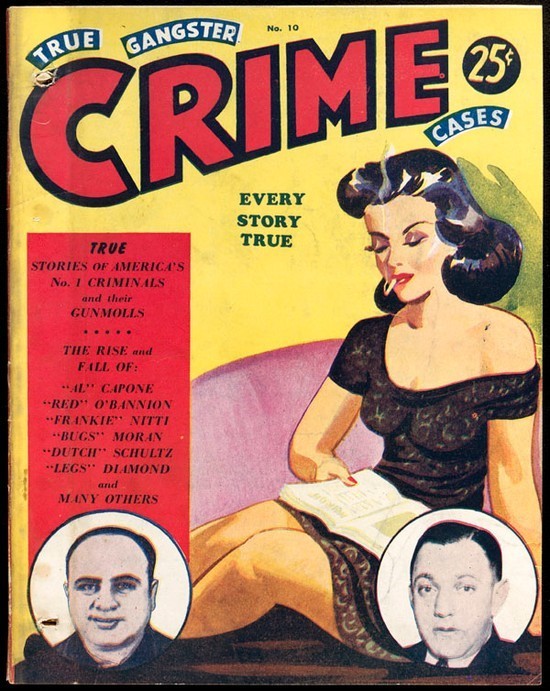Does true
crime make people more dangerous and untrustworthy? Is it a
gateway to a less empathic society that is no longer affected by crime and
death? Does it make people more susceptible to being okay with violence in
general?
اضافة اعلان
The true crime genre has existed since
the 16th century. It emerged with the rise of the printing press and
developments in criminal justice. It was entertainment for the “elite”, only
affordable for people in higher positions in society. It was meant to have
religious undertones — it showed gory and bloody details, gripped the attention
of readers, and then showed readers that such sins had and required punishment.
Sixteenth-century true crime primarily focused on familial deaths, usually more
than one.
With the arrival
of the 1800s, detective stories became a worldwide sensation, cementing the
true crime genre popularity. Penny dreadfuls followed, offering mass-produced,
low-cost serials to a market of young, increasingly literate working men.
Scenes of obscene gore were laid out in an affordable, easily-consumed format,
which resulted in an upheaval of entertainment literature. From cheap serials,
the genre grew further with the emergence of tabloids, paperback books, and TV
shows in the 20th century, and today’s podcasts, novels, and documentaries.
Social impact
A study by social-cultural anthropologist Kseniya Dmitrieva in 2017
looked to explore the public fascination with violence. She described violence
as “a by-product of society; as a learned behavior”. She noted that researchers
have been concerned with the mass media’s portrayal of violent events since the
invention of the television and television news. News media succeeded in
drawing in more views — and therefore revenue — “by catering to the public’s
fascination with rare and sensational acts of violence”, she said.
 The cover of a true crime book from the 1940s. (Photo: Flickr)
The cover of a true crime book from the 1940s. (Photo: Flickr)
Criminologist Grant Duwe, in an article
published in November 2000, described crime as a “central component in
entertainment”. He further added that the blurring of the boundaries between
reality and fiction happens due to the realism with which crime is represented,
which in turn desensitizes audiences to serious and violent offences.
People in the true
crime community have raised concerns regarding the ethics of how crimes are
reported on in the media the world. Typically, true crime podcasts and
docuseries focus on covering crimes and acts of violence that occurred in the
past, or those that happened recently and have been resolved. Most of the time
there is respect and empathy that goes into these reports, maintaining respect
for and the privacy of the family and descendants of the deceased.
... Researchers have been concerned with the mass media’s portrayal of violent events since the invention of the television. ...
More recently,
however, some who cover true crime have lost that reverence and respect, said
Lama, a Jordanian six-year true crime enthusiast.
“I have seen them
(media personalities) apply their bright pink and red lipstick as they talk
about a woman who (was) ... brutally murdered,” she said.
“Her case is still
open and ... yet they make jokes and monetize their videos and profit off of
these deaths and violent acts. It’s absurd.”
Public perception
We are frequently bombarded by headlines that fit the true crime genre
in the
Middle East. Headlines such as “Egypt judge sentenced to death for
wife’s murder”, “Police arrests perpetrators in 13-year-old murder case”, and
“New campus femicide sparks outrage in Egypt” trend often.
While these events
are important to discuss, sociologist Jack Katz from the University of
California notes that in the US, murders and sexual assaults make up 70 percent
of the crimes reported on news outlets despite only making up 25 percent of
committed crimes.
 A pamphlet describing a murder trial from the 1810s. (Photo: Wikimedia Commons)
A pamphlet describing a murder trial from the 1810s. (Photo: Wikimedia Commons)
A primary source
of true crime content online originates on YouTube. Popular channels such as
Nexpo, Euxcoxia Mysteries, and Cadaber explore topics like “Tinder criminals”
and create rankings of criminals on scales of “bad to worst”.
While mostly
respectful of the serious topics they cover, many who have true crime channels
are not professional journalists, investigators, doctors, or psychologists,
which leaves the accuracy of their coverage or validity of their conclusions in
question.
The true crime may
be entertaining, but overconsumption of the genre may foster apathy or
desensitize you the violent nature of its content. It is important to keep in
mind that those that propagate true crime content stand to benefit from
dramatizing and sensationalizing the topics they cover.
Read more Odd and Bizarre
Jordan News




